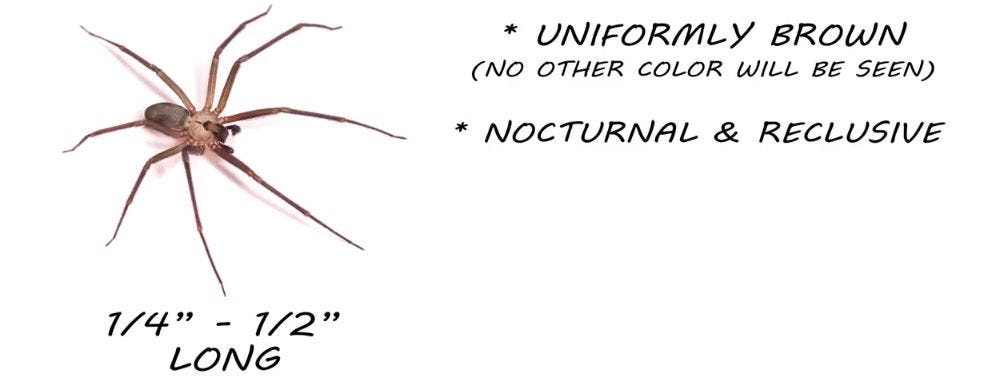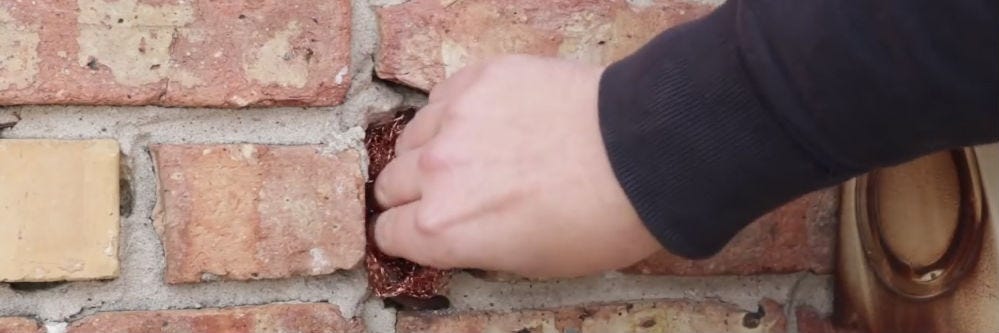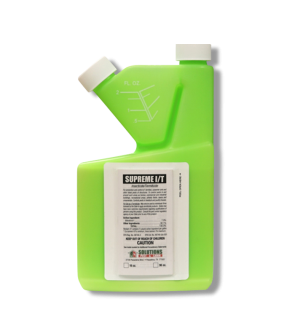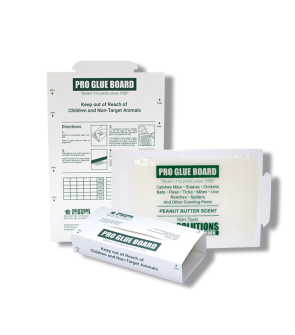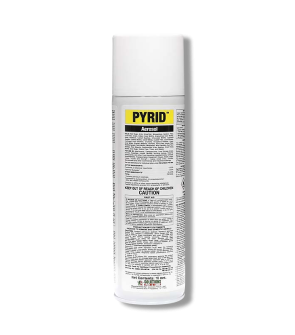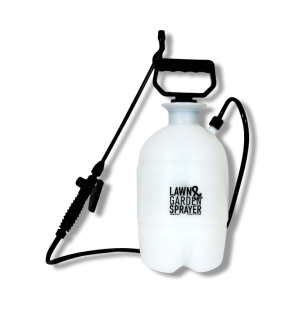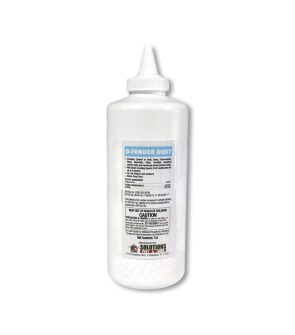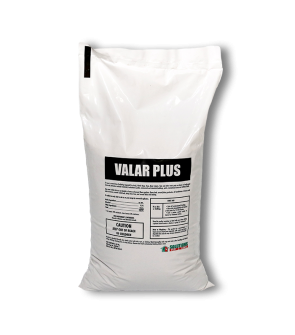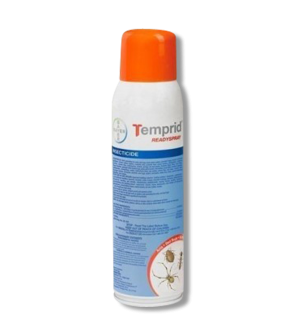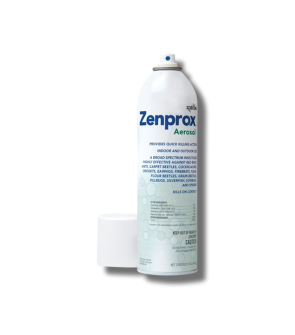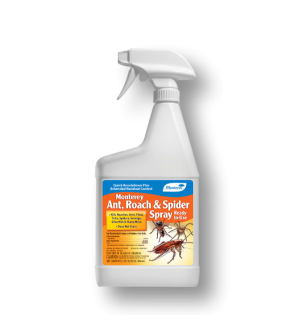Gain access to personalized product screening, the best pricing, rewards, and more!
Most Effective Products
Brown Recluse Spider Control: How To Get Rid of Brown Recluse Spiders
The brown recluse spider is a species feared by many because of its venomous bite. Though elusive, it is not uncommon to encounter one in or around the home.
Brown recluse spiders are nocturnal; they like to live alone and build webs in dark, secluded corners. They are poisonous and bite when they feel threatened or disturbed. Bites may be painful and leave a bit of irritation, but in rare cases, a blister can develop into an open ulcer and bring about symptoms like restlessness, fever, and trouble sleeping.
Brown recluse spiders are, as their name states, more reclusive and would much rather be left alone. However, this deadly spider hiding in your home can cause great concern, and thus, control and removal are necessary.
If you have brown recluse spiders in your home, our DIY treatment guide can help you take action quickly to protect yourself and your family from harmful bites. Our pest control experts have put together these step-by-step directions, which, if followed carefully using our recommended products, will guarantee that the brown recluse in your home will be eliminated.
Identification
Before you can proceed with a treatment program, you must ensure you are dealing with a brown recluse spider, not a different spider species. Knowing what a brown recluse spider looks like will determine your treatment approach.
- Brown recluse spiders are small and range in color from dull yellow to tawny, darkish brown.
- Brown recluse spiders are quite small, with adults measuring approximately 1/4 - 1/2 inch long.
- The brown recluse spider can be distinguished by the violin or fiddle shape on its head. The black lines go from its eyes to its abdomen.
- They also have a unique eye pattern with 6 to 8 eyes arranged in a semicircle.
- Both males and females have three pairs of eyes (6 eyes total) and a fiddle-like marking on their backside, but the male has longer mouthparts.
- The male brown recluse has a broader head, and its abdomen and legs are thinner than the female.
Use the description and image above to help you identify the brown recluse spider. If you are having trouble, contact us, and we will help you identify your spider problem and offer control recommendations.
Inspection
After you have confirmed that you are dealing with brown recluse spiders, you need to inspect the areas where they are active and frequent. This will help you to know where to focus your treatment applications.
Where To Inspect
Brown recluse spiders like to live in dry or slightly wet areas with dust and dirt. Some examples of where they have been found hiding include tree trunks, hollow hills, behind furniture, boxes, and tanks.
Indoors, the brown recluse spider is usually found in areas where there is no human activity, and dust accumulates. Check areas of your home where there is excessive clutter, such as garages, basements, and attics.
What To Look For
It would be best if you were looking for the brown recluse spider themselves or signs that they have been present. The brown recluse always searches for cracks and crevices to hide and protect themselves.
Look in dark areas of the home for this small brown spider with a violin-shaped pattern on its head. Brown recluses don't weave webs like other spiders but rather disorderly upholster their burrows with silk lining.
Treatment
Always wear the proper personal protective equipment (PPE) for safety, such as gloves, a protective mask, and goggles, before conducting any chemical applications.
The best way to control brown recluse spider invasions in the home is to perform exclusion, declutter the house, and apply Supreme IT and the Solutions Pro Glue Board to the area so the spider is either killed or captured.
Step 1: Decluttering
Start by creating unfavorable conditions for the brown recluse spider. This can be done by reducing clutter and cleaning up indoors, thus eliminating places for the brown recluse to hide. Clean out your closets, attics, basements, garages, and storage units as if it is spring cleaning season.
Keep everything organized and throw away things you don’t need. Wipe and clean all areas properly using disinfectants. Look for webs spun from silk, usually found behind mirrors and insulation.
Outdoors, it would be best to focus on removing excess mulch and leaf litter from the garden. Woodpiles, compost leaf piles, bark, and stones should also be removed. Clean up the garage, sheds, attic, air ducts, and air conditioner ducts. These are a few places where the Brown Recluse spiders like to hide and lay their eggs.
Step 2: Exclusion
Next, we recommend moving on to exclusion, cutting off access into your home. This can be done by sealing cracks outside the house and using screens on doors and windows. Scan carefully around your home for possible entry and use caulk and/or Stuf-Fit Copper Mesh.
Do this both inside and outside, removing any places that brown recluse spiders can enter or hide. Continue exclusion measures by making your outdoor area uninviting by clearing away any vegetation or debris in your yard.
Step 3: Perimeter Treatment With Supreme IT
To control a brown recluse indoors, we recommend spraying an insecticide like Supreme IT on all your baseboards, around windows and doorways, and any other cracks or crevices where you think the spider may be hiding.
Supreme IT is a broad-spectrum insecticide labeled for treating many pests, including Brown Recluse Spiders. It works great as a barrier treatment to keep pests away because it has a long residual effect that kills for up to 90 days after application.
To apply Supreme IT, simply mix it with water in a handheld pump sprayer.
Apply Supreme IT at a rate of 1 oz. per gallon of water to treat 1,000 sq. ft.
This should be applied to all your grass, mulch, flowers, bushes, etc., and the home’s siding. Make sure to spray the siding between 5 and 10 feet since brown recluse spiders are known for crawling up walls and entering through the attic.
If you find the brown recluse, use a spray with a quick contact kill like Pyrid Aerosol. This product is odorless and goes on “dry,” making it a great choice for use inside living areas.
Step 4: Apply Valar Plus Bifenthrin Granules
Valar Plus Bifenthrin Granules is a reliable granular insecticide that kills a long list of insects for up to 90 days. It can also significantly reduce the presence of insects, thus taking away the Brown Recluse Spider's food source.
The typical application rate is 2.3 pounds of Valar Plus Bifenthrin Granules to treat 1,000 square feet of lawn.
Measure the square footage of the treatment area to determine how much Valar Plus to use. Measure the length and width of the treatment area in feet, then multiply them together (length X width = square footage).
To broadcast Valar Plus Bifenthrin Granules, you could use a push or hand spreader like the Plantmates Scatterbox. While both styles are easy to use, a broadcast may be better suited for larger lawns as it holds more granules than a hand spreader and can cover a lot of ground quickly. If you need to spread granules on a flowerbed, around trees, or cover a smaller area and want to do it quickly yet precisely, the Plantmates Scatterbox hand spreader is ideal.
After measuring your lawn's square footage, add the appropriate amount of Valar Plus Bifenthrin Granules to your spreader and then broadcast it uniformly over your entire lawn while walking at a steady pace. Spread the product in flower beds, around trees, and where you have noticed insect activity.
Step 5: Lay Out Glue Traps
If you cannot find the brown recluse spider after initially spotting it, you can try and capture them with Solutions Pro Glue Boards.
Place the glue boards in your attic, basement, and garage where you identified spider activity.
Before long, the glue boards will catch the spider that survived treatment, and you can dispose of them accordingly.
Prevention
Once brown recluse spiders have been removed from your property, you will want to ensure they do not return. Take on some of the preventative practices below:
- To prevent another brown recluse invasion, maintain a clutter-free environment in rooms you do not frequent often. Keeping a clean and clutter-free garage, basement, or attic will reduce harborage areas for insects and spiders.
- Seal off or caulk any openings around your property to block entry points. By sealing cracks and crevices, insects and spiders won't be able to get inside.
- The quarterly barrel treatments of Supreme IT insecticide should deter the brown recluse and other insects from entering your home.
Key Takeaways
What is a Brown Recluse Spider?
- The brown recluse spider is notorious for its venomous bite and tendency to trespass into homes and hide in dark, secluded areas.
How to Get Rid of Brown Recluse Spiders
- Brown recluse spider treatment involves a combination of exclusion measures, indoor and outdoor insecticide treatment with Supreme IT and Valar Plus Bifenthrin Granules, and trapping using Catchmaster Glue Boards. If you see the spider, you can kill it on contact with Pyrid Aerosol.
Preventing Brown Recluse Spider Reinfestation
- To prevent brown recluse spiders from trespassing on your home again, practice exclusion and perform barrier treatments of Supreme IT insecticides periodically throughout the year.







